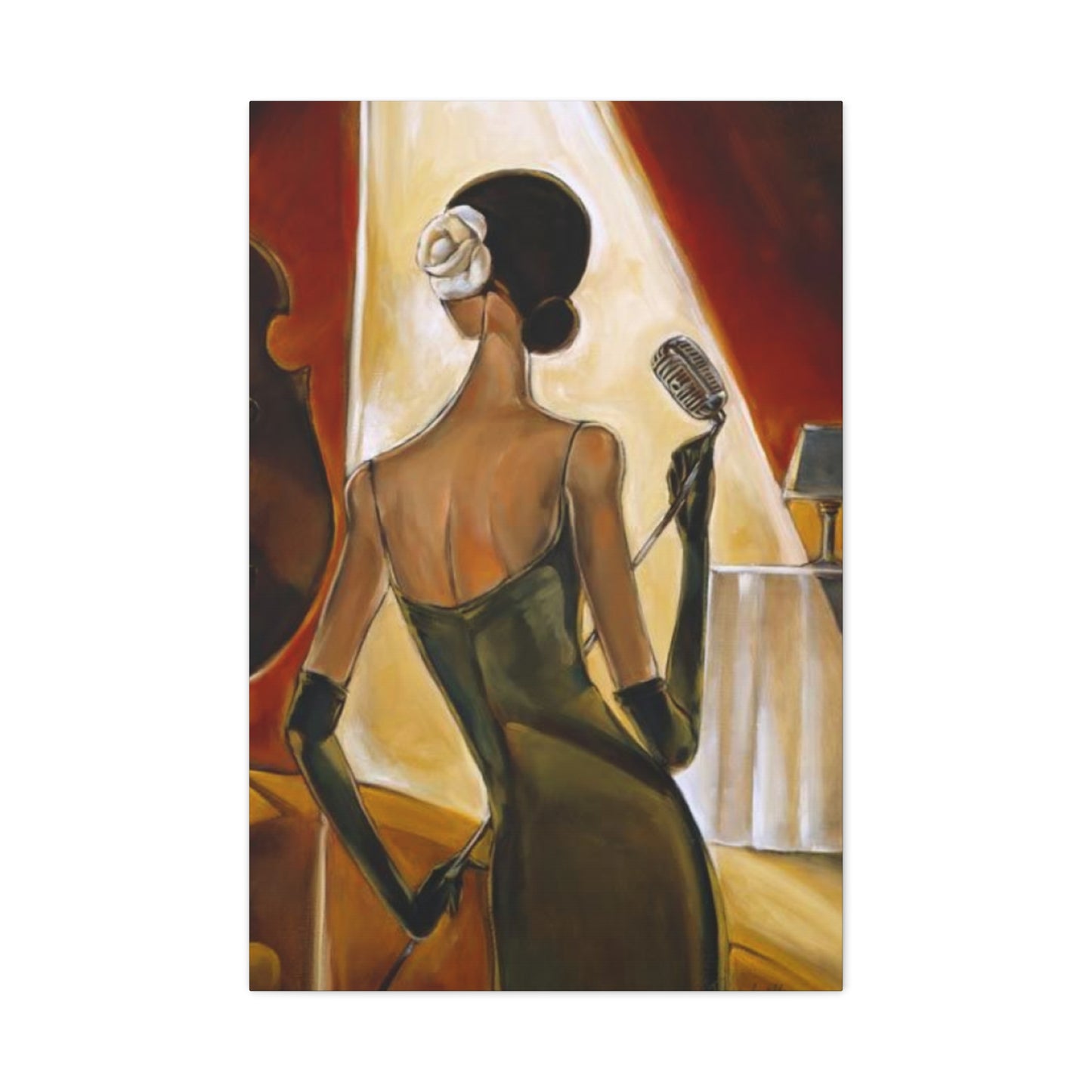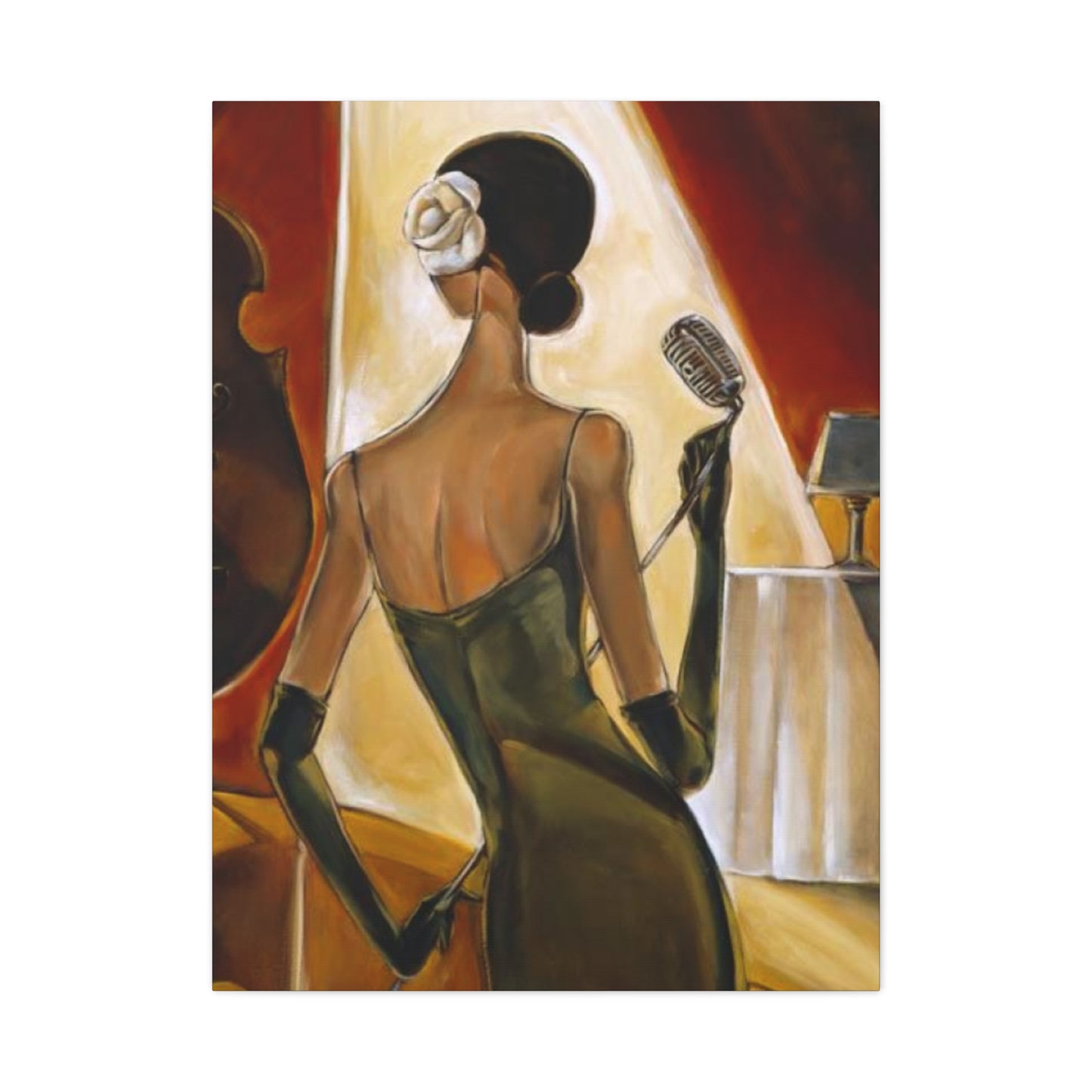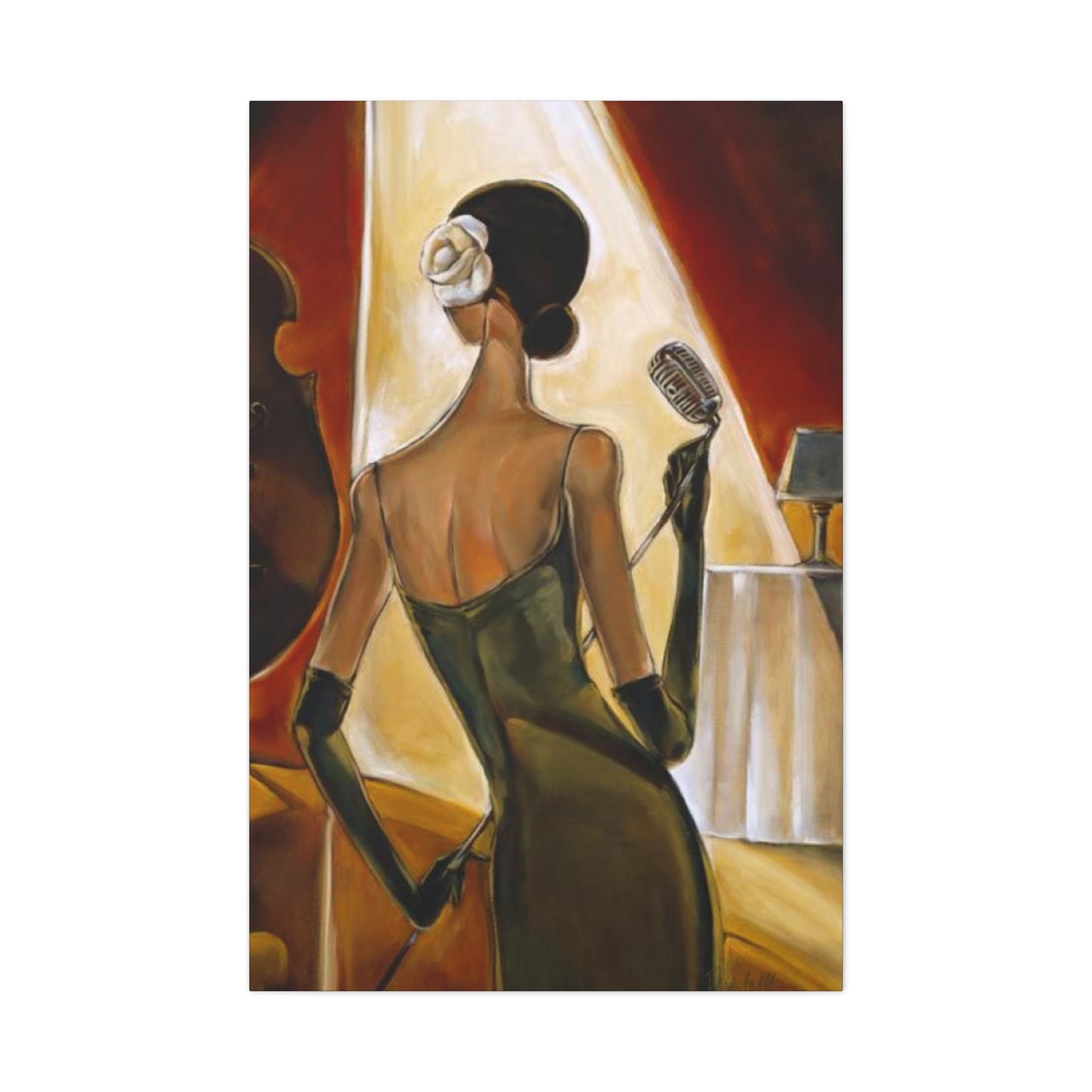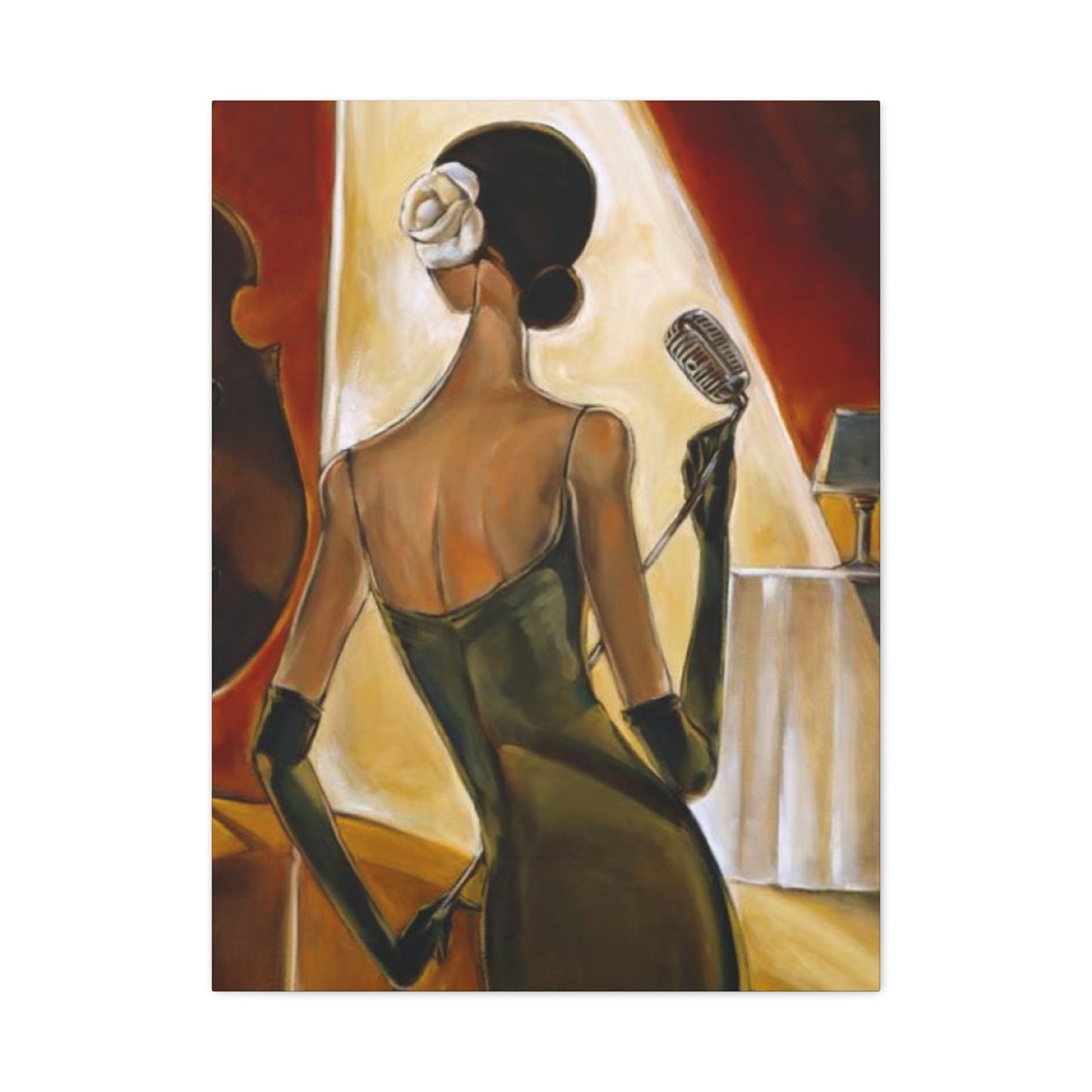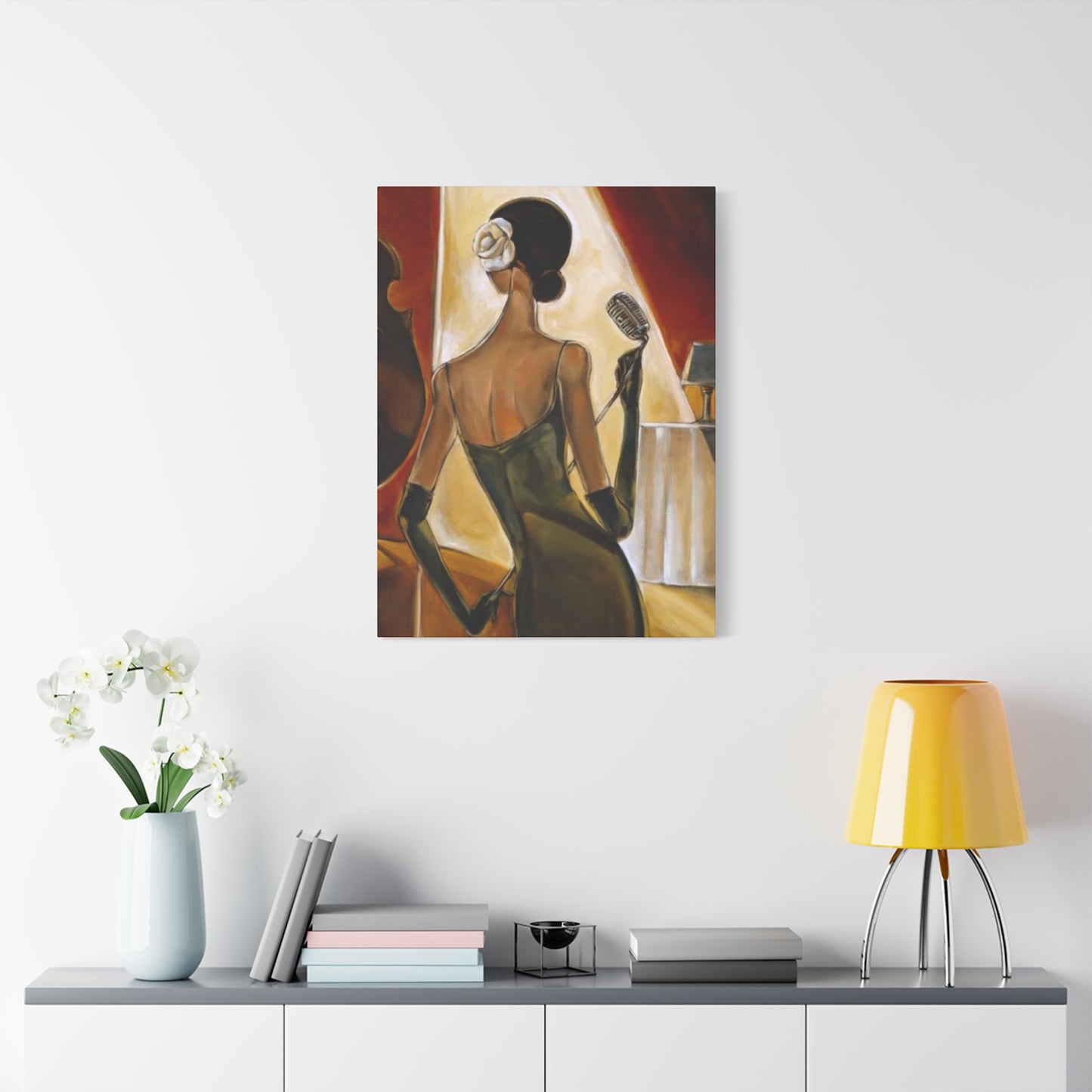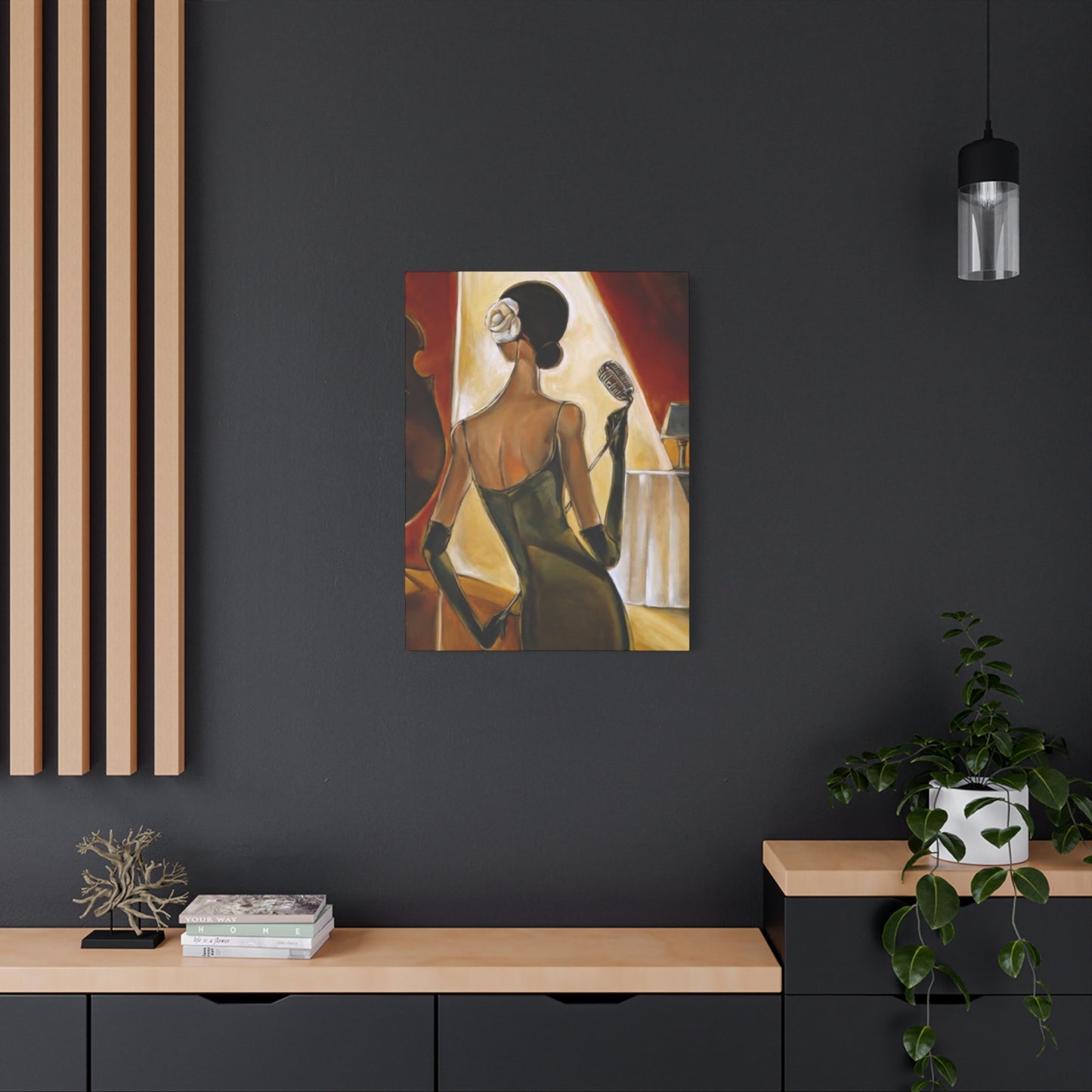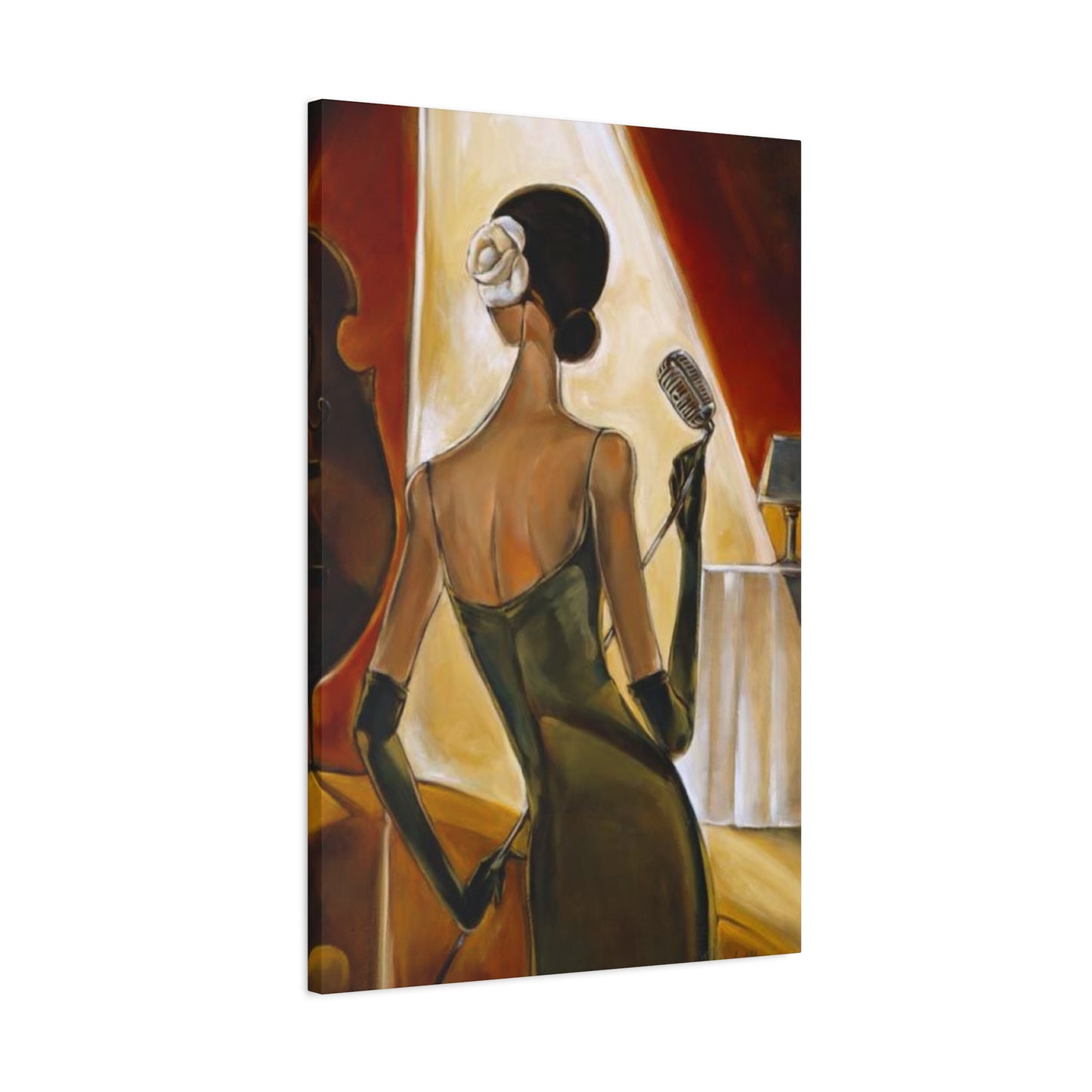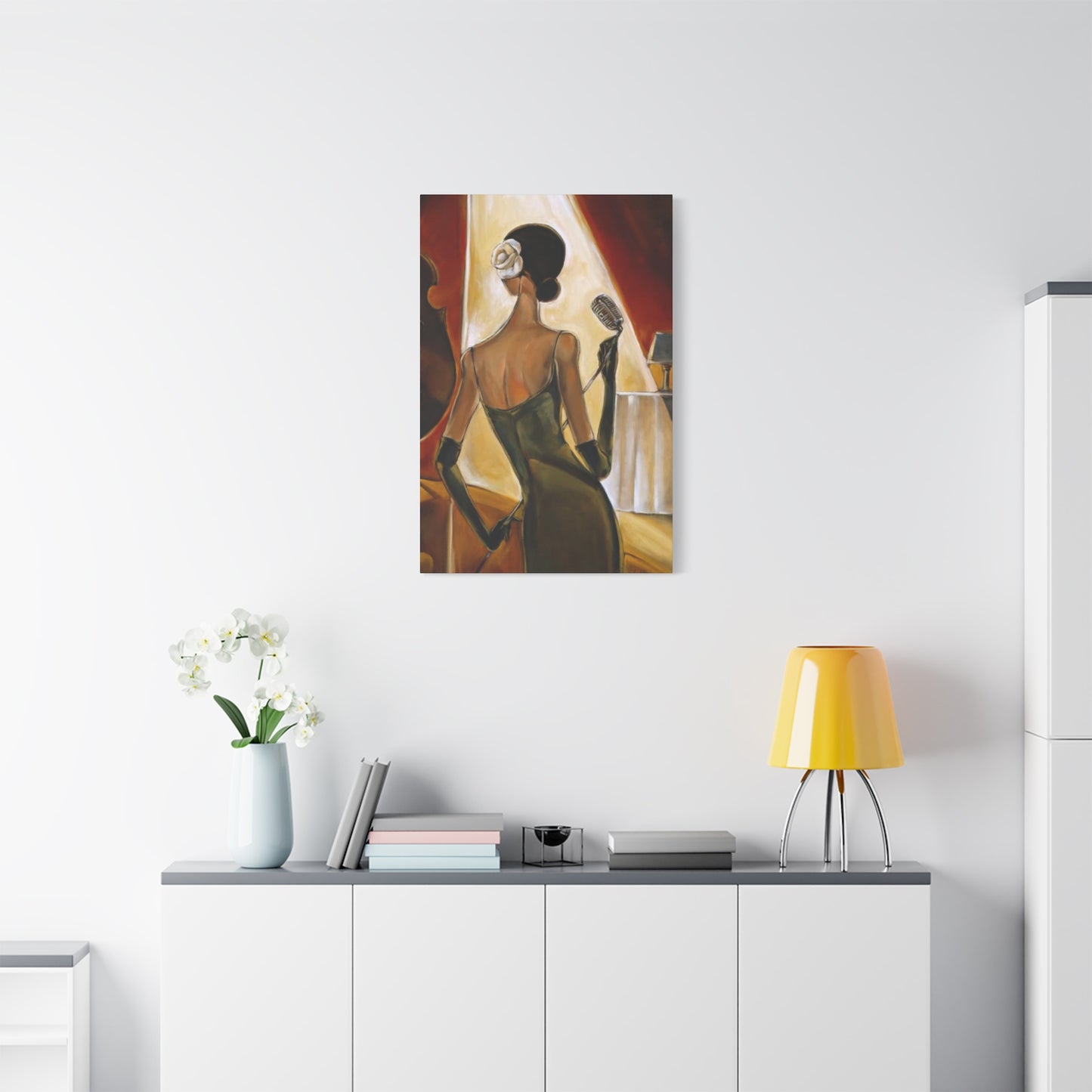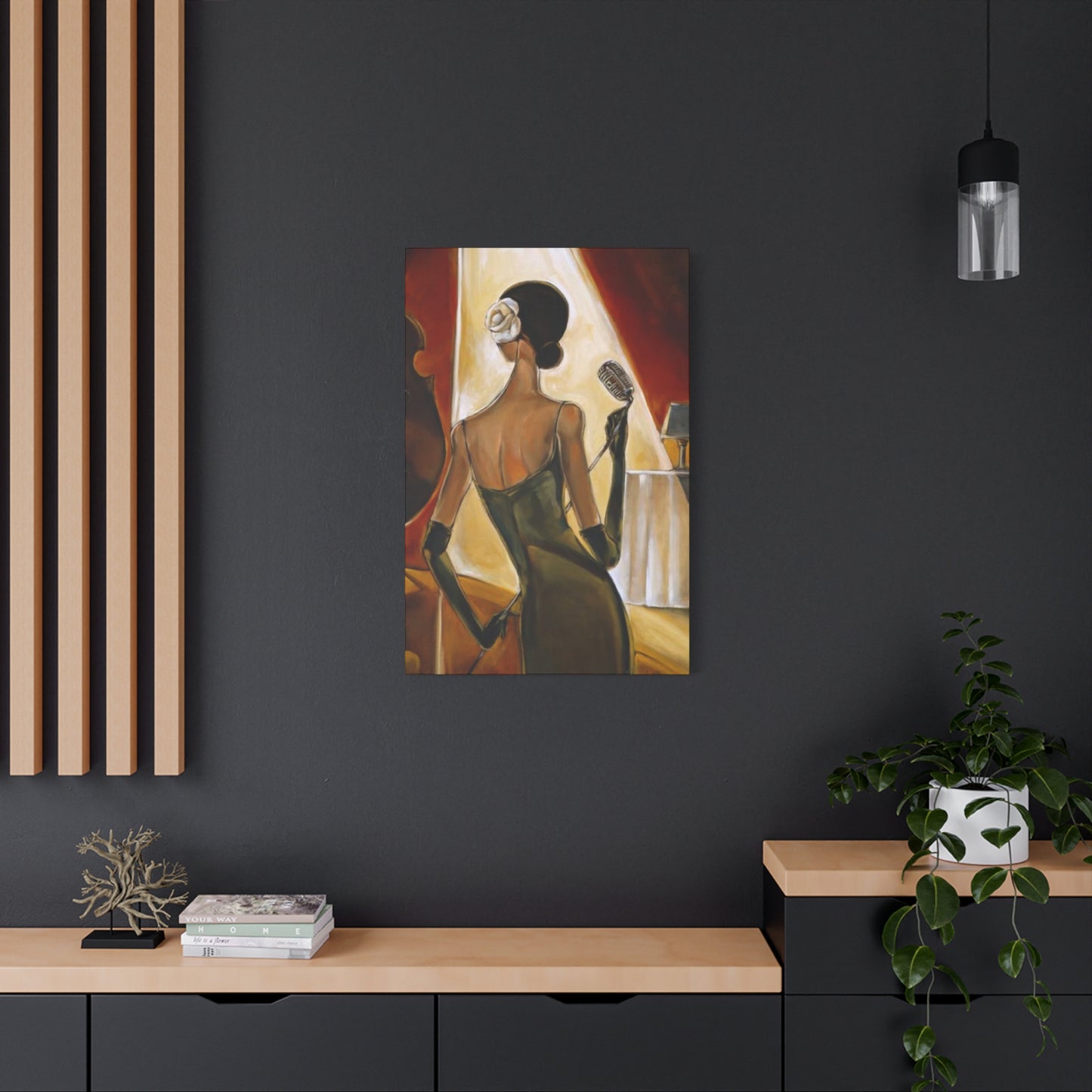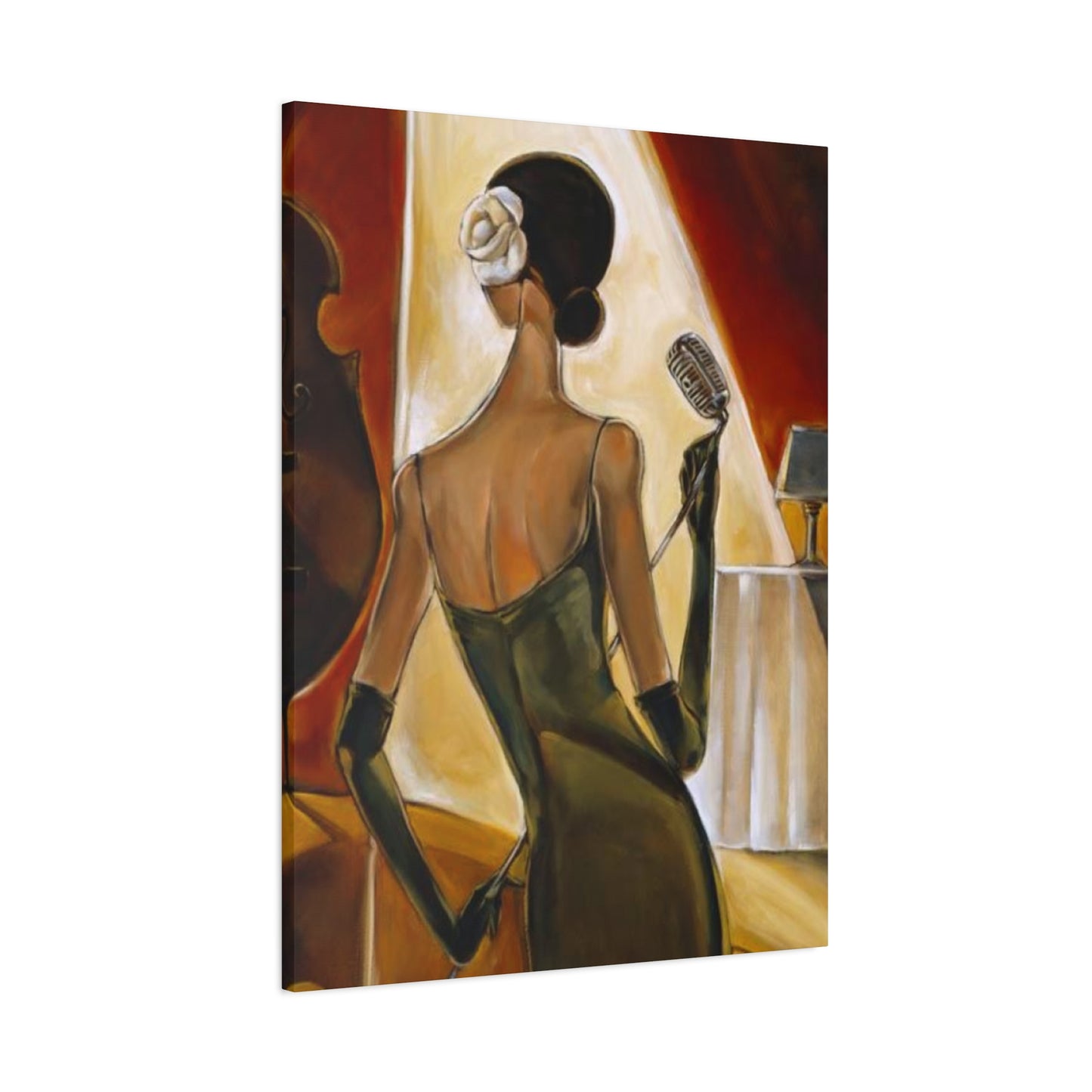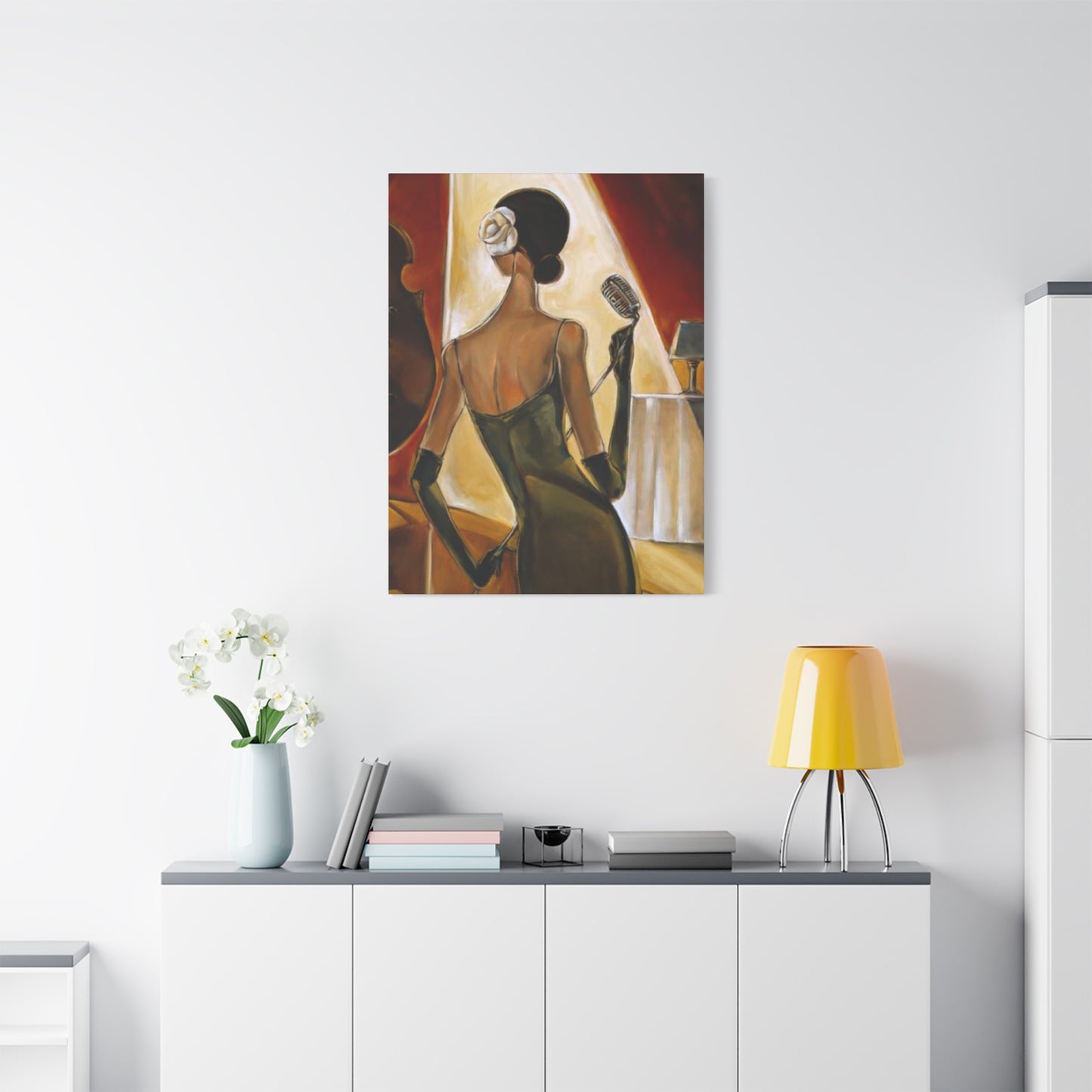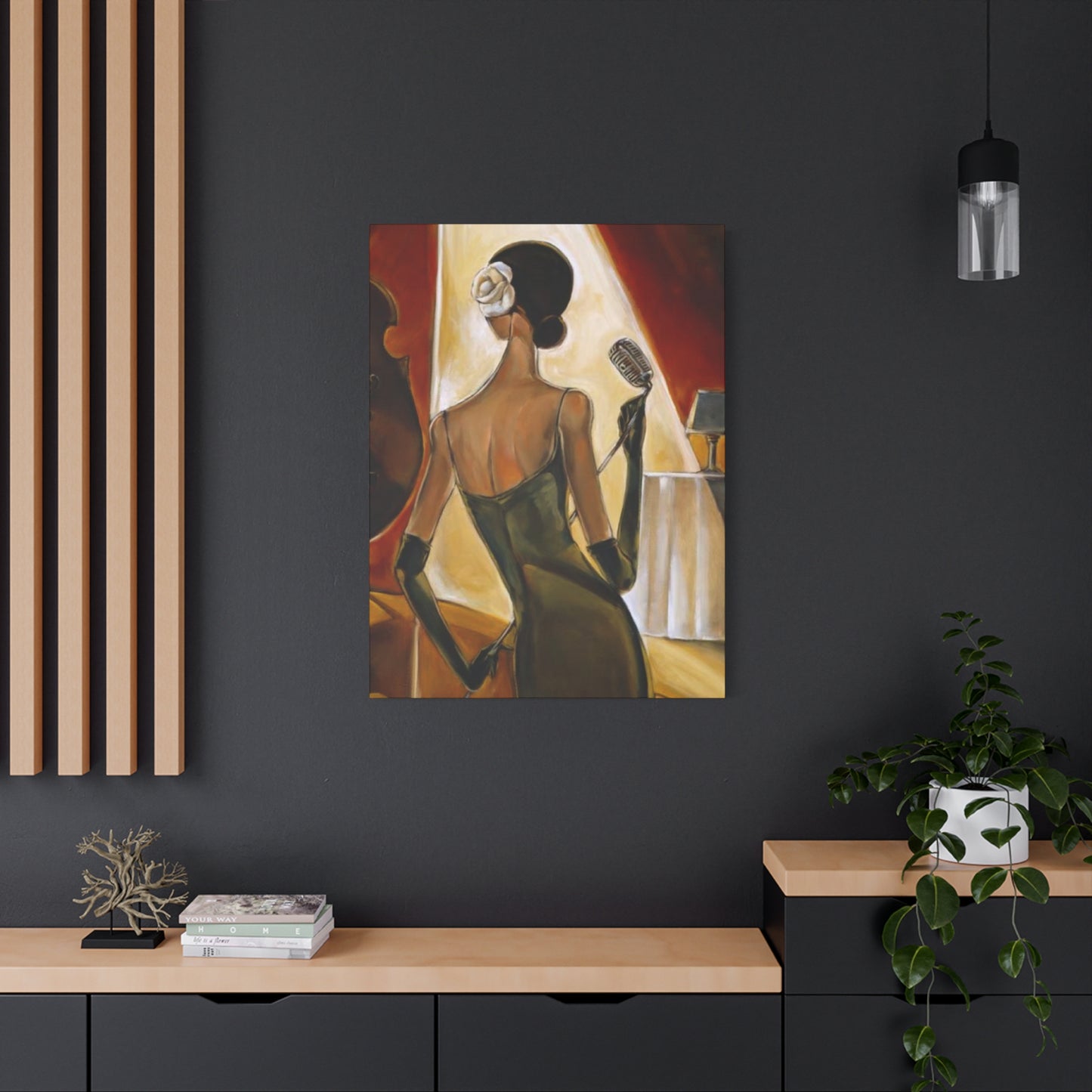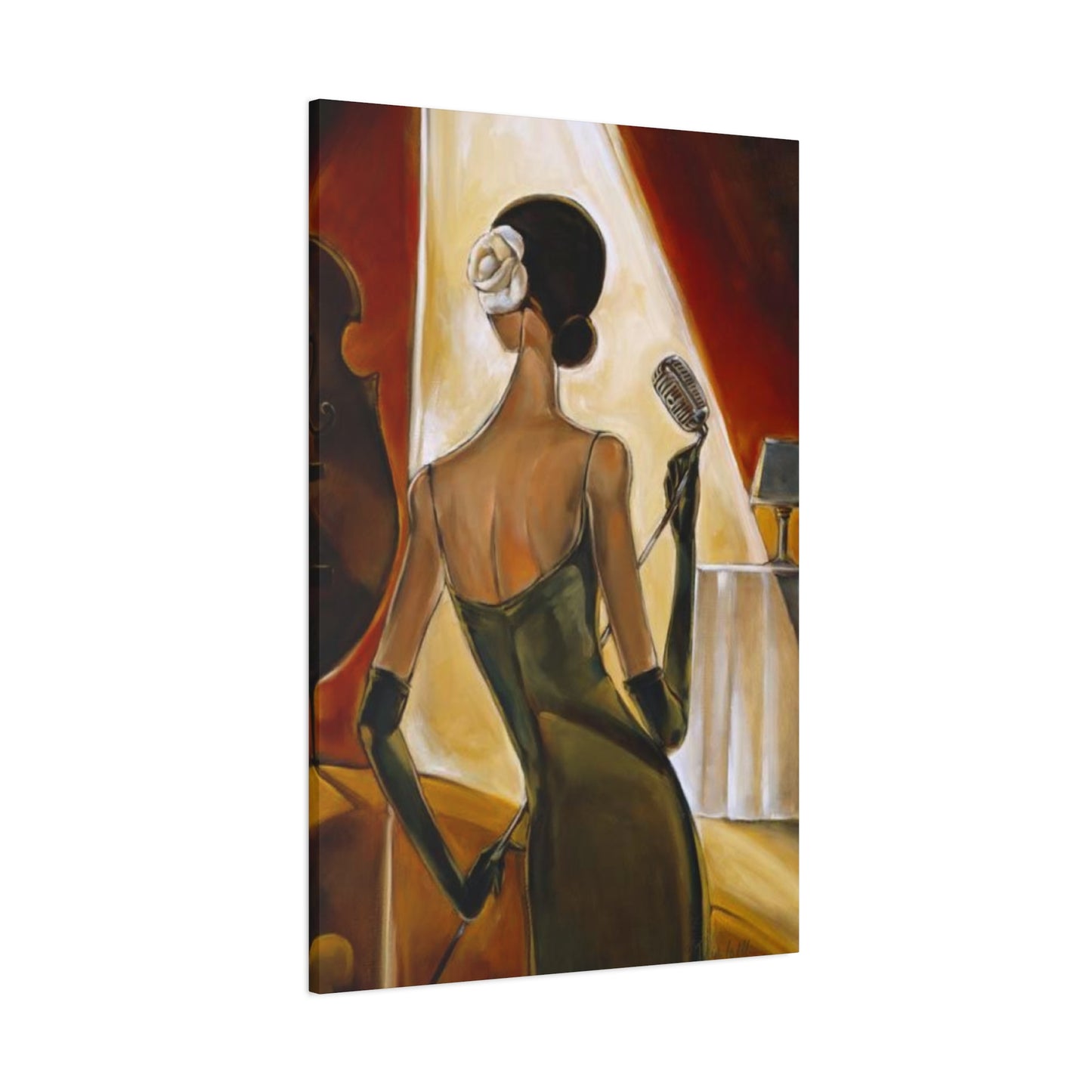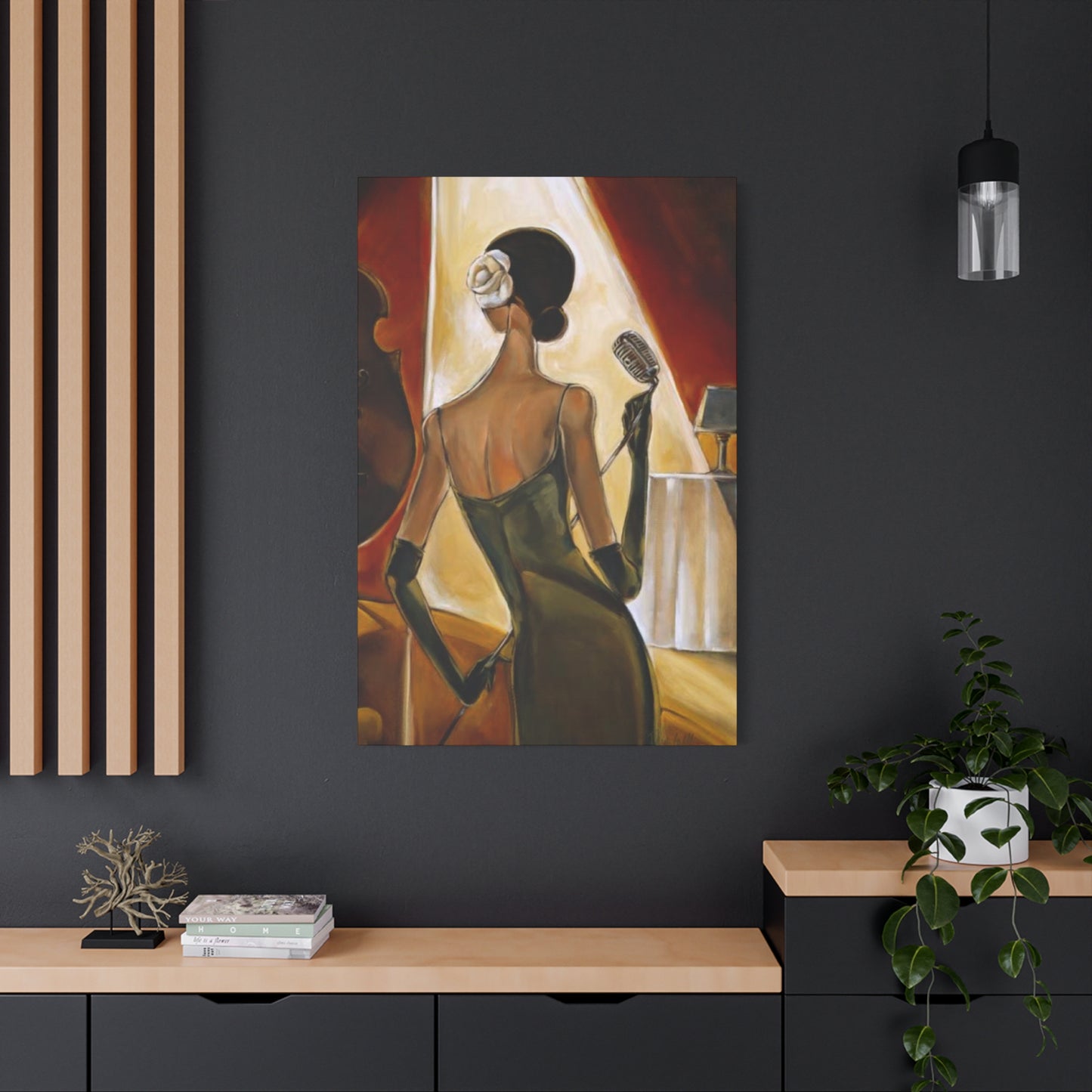Female Jazz Icons Wall Art: Honoring Musical Pioneers Through Visual Expression
The world of jazz music has been profoundly shaped by remarkable women whose voices, instruments, and artistic vision have left indelible marks on the genre. These pioneering musicians deserve recognition not only through their recorded legacy but also through visual tributes that capture their essence, passion, and groundbreaking contributions. Wall art dedicated to female jazz legends serves as both celebration and education, bringing their stories into contemporary living environments while honoring their transformative impact on American music culture.
The intersection of visual arts and jazz creates a powerful medium for storytelling, allowing artists and enthusiasts to explore themes of resilience, creativity, and artistic excellence. Through carefully crafted murals, prints, paintings, and mixed media installations, these visual tributes transform ordinary environments into galleries that celebrate the extraordinary women who broke barriers and redefined musical expression.
Celebrating Female Jazz Legends in Wall Art
The artistic representation of female jazz pioneers through wall art represents more than mere decoration; it constitutes a form of cultural preservation and celebration. These visual tributes serve as powerful reminders of the women who overcame significant social and professional obstacles to create timeless music that continues to inspire generations.
Billie Holiday, often regarded as one of the most influential jazz vocalists of all time, emerges as a frequent subject in contemporary wall art. Her distinctive voice and emotional depth translate beautifully into visual medium, with artists capturing her signature gardenia hairpiece, expressive eyes, and the raw emotion that characterized her performances. Murals depicting Holiday often incorporate elements of her most famous songs, using typography and symbolic imagery to create layered compositions that speak to both her artistic genius and personal struggles.
Nina Simone, the High Priestess of Soul, presents another compelling subject for wall art creators. Her powerful stage presence, classical training, and unwavering commitment to civil rights activism provide rich material for artistic interpretation. Visual artists frequently portray Simone at the piano, her hands commanding the keys while her expression conveys the intensity and passion that defined her performances. These artworks often incorporate elements from the civil rights era, acknowledging her dual role as entertainer and activist.
Ella Fitzgerald, known as the First Lady of Song, inspires wall art that celebrates technical perfection combined with joyful expression. Artists often capture her mid-performance, mouth open in song, with visual elements that suggest the clarity and range of her voice. Her approachable personality and groundbreaking achievements in vocal jazz provide artists with opportunities to create works that are both celebratory and historically significant.
Sarah Vaughan, with her rich contralto voice and sophisticated musical interpretations, appears in wall art that emphasizes elegance and vocal mastery. Artists frequently portray her in performance settings, often incorporating musical notation or abstract elements that suggest the complexity and beauty of her vocal arrangements.
These visual tributes extend beyond individual portraits to include group compositions that celebrate the collective impact of female jazz pioneers. Such artworks might feature multiple artists sharing the same composition, creating visual conversations between different eras and styles while emphasizing the continuous thread of female excellence in jazz music.
The creation of wall art celebrating female jazz legends requires careful consideration of historical accuracy, artistic interpretation, and cultural sensitivity. Artists must balance respect for these musicians' legacies with creative expression, ensuring that their visual tributes honor the complexity and significance of their subjects' contributions to music and culture.
Contemporary muralists working on public projects often collaborate with jazz historians, musicians, and community members to ensure their representations accurately reflect both the musical and cultural impact of their subjects. This collaborative approach results in artworks that serve educational purposes while creating visually striking additions to public environments.
The materials and techniques used in creating these tributes vary widely, from traditional oil paintings to modern digital prints, from elaborate murals to simple but powerful line drawings. Each medium offers unique opportunities for artistic expression while serving the common goal of celebrating these remarkable women and their lasting contributions to jazz music.
The Visual Story of Female Jazz Vocalists
Female jazz vocalists possess unique storytelling abilities that translate remarkably well into visual art forms. Their capacity to convey complex emotions through voice finds parallel expression in wall art that captures the essence of their musical narratives. The visual interpretation of female jazz singing creates opportunities for artists to explore themes of empowerment, vulnerability, resilience, and artistic mastery.
The physicality of jazz singing provides rich material for visual artists. The way a vocalist holds the microphone, the tilt of her head during an emotional passage, the gesture of hands that accompany lyrical phrasing – these elements become central components in wall art that seeks to capture the performance experience. Artists often focus on these physical details to convey the intimate relationship between performer and audience that characterizes great jazz vocals.
Facial expressions represent another crucial element in visualizing female jazz vocalists. The concentration required for complex vocal runs, the joy expressed during upbeat numbers, the pain conveyed through blues ballads – these emotional states provide artists with powerful subjects for their creative interpretations. Many successful wall art pieces focusing on female jazz singers center on close-up portraits that emphasize facial expression as the primary vehicle for emotional communication.
The relationship between female jazz vocalists and their instrumental accompanists offers additional opportunities for visual storytelling. Wall art often depicts these musicians in conversation with piano players, horn sections, or rhythm sections, capturing the collaborative nature of jazz performance. These group compositions emphasize the leadership roles that many female vocalists assumed within their musical ensembles, challenging traditional gender dynamics in music.
The evolution of female jazz vocal styles across different eras provides artists with opportunities to create works that explore musical and cultural history. Early jazz singers like Bessie Smith and Ma Rainey established foundational approaches to jazz vocals that later artists like Carmen McRae and Betty Carter built upon and transformed. Wall art can trace these evolutionary connections through visual elements that suggest both continuity and innovation across generations.
The cultural contexts in which female jazz vocalists performed add layers of meaning to their visual representations. The speakeasy era, the Harlem Renaissance, the Civil Rights movement, and contemporary jazz revival periods each provide distinct visual vocabularies that artists can incorporate into their tributes. These historical references help viewers understand the broader significance of these musicians' contributions beyond their purely musical achievements.
Color palettes in wall art dedicated to female jazz vocalists often reflect the emotional qualities of their musical styles. Warm, rich colors might represent the intimate atmosphere of jazz clubs, while bold, vibrant hues could capture the energy of swing-era performances. Some artists choose monochromatic approaches that emphasize form and expression over color, creating timeless quality that transcends specific historical periods.
Typography plays a significant role in many wall art pieces dedicated to female jazz vocalists. Song titles, lyrical excerpts, or biographical information incorporated into the visual composition create additional layers of meaning while providing educational context. The style of typography chosen often reflects the era being represented, from Art Deco lettering for 1920s performers to modern fonts for contemporary artists.
The scale of wall art dedicated to female jazz vocalists varies from intimate portrait-sized pieces suitable for residential settings to large-scale murals designed for public viewing. Each scale presents different opportunities and challenges for artists seeking to capture the essence of these performers. Larger works allow for more detailed storytelling and can incorporate multiple elements, while smaller pieces often focus on essential characteristics that define individual artists.
Lighting considerations in wall art placement can enhance the dramatic qualities inherent in jazz vocal performance. Strategic lighting can create shadows and highlights that emphasize the emotional intensity captured in these visual tributes, creating viewing experiences that parallel the atmospheric qualities of jazz club performances.
Portraits of Contemporary Female Jazz Musicians
The contemporary jazz scene continues to be enriched by talented female musicians who push boundaries and expand the genre's possibilities. Wall art celebrating these modern artists serves multiple purposes: recognizing current excellence, inspiring future generations, and demonstrating jazz music's ongoing evolution and relevance.
Esperanza Spalding represents one of the most visible and successful contemporary female jazz artists, making her a popular subject for modern wall art. Her virtuosic bass playing, distinctive vocals, and innovative approach to jazz composition provide artists with rich material for visual interpretation. Wall art featuring Spalding often emphasizes her technical skills while capturing the joy and creativity that characterize her performances.
Portraits of Spalding frequently incorporate her signature curly hair as a visual element, using its natural volume and texture to create dynamic compositions. Artists often depict her with her bass, emphasizing her dual role as vocalist and instrumentalist while highlighting the physical relationship between musician and instrument that defines jazz performance.
Kamasi Washington, while primarily known as a saxophonist, has collaborated extensively with female vocalists and has family connections to female jazz musicians, making her story relevant to discussions of contemporary female jazz artists. Wall art exploring these connections often creates visual narratives that span generations while emphasizing the continuing evolution of jazz music.
Cecile McLorin Salvant has gained recognition as one of the most promising young jazz vocalists, earning critical acclaim and multiple Grammy Awards. Wall art celebrating Salvant often focuses on her expressive vocal style and her ability to interpret both classic jazz standards and contemporary compositions. Her youthful energy and classical training provide artists with opportunities to create works that bridge traditional and modern approaches to jazz.
Hiromi Uehara, the Japanese jazz pianist, represents the international dimension of contemporary jazz while demonstrating the genre's ability to transcend cultural boundaries. Wall art featuring Hiromi often emphasizes her dynamic keyboard techniques and the physical energy she brings to her performances. Her success challenges geographic and cultural assumptions about jazz while providing inspiration for artists worldwide.
Lakecia Benjamin, a rising star in contemporary jazz saxophone, offers artists opportunities to explore themes of instrumental mastery and creative innovation. Her work spans multiple jazz subgenres, from traditional bebop to contemporary fusion, providing rich material for visual interpretation. Wall art featuring Benjamin often emphasizes her saxophone playing while incorporating visual elements that suggest the diversity of her musical interests.
Contemporary female jazz artists often blend jazz with other genres, including hip-hop, R&B, world music, and electronic music. This genre-blending approach provides wall artists with opportunities to create visually eclectic compositions that reflect the musical diversity of modern jazz. These artworks might incorporate visual elements from multiple cultural traditions while maintaining focus on jazz as the unifying element.
The visual documentation of contemporary female jazz musicians through wall art serves historical purposes, creating records of current artistic achievement that future generations can study and appreciate. Unlike historical figures who may be documented primarily through vintage photographs, contemporary artists can collaborate directly with visual artists, providing input on how they wish to be represented.
Social media and digital photography provide wall artists with extensive visual references when creating portraits of contemporary female jazz musicians. This abundance of source material allows for more detailed and accurate representations while offering insights into these artists' personalities and creative processes beyond their public performances.
Empowering Female Jazz Artists Through Street Art
Street art has emerged as a powerful medium for celebrating female jazz artists, bringing their stories and achievements into public view while challenging traditional boundaries between high and popular culture. This grassroots approach to artistic celebration creates opportunities for broader community engagement while ensuring that the contributions of female jazz pioneers remain visible and relevant to contemporary audiences.
Urban environments provide ideal canvases for large-scale tributes to female jazz artists, allowing muralists to create works that command attention and spark conversation. These public artworks serve educational purposes, introducing passersby to artists they might not otherwise encounter while reinforcing the cultural significance of jazz music within urban communities.
The democratization of art through street murals ensures that celebrations of female jazz artists reach diverse audiences regardless of their ability to visit traditional galleries or museums. This accessibility aligns with jazz music's historical roots in community-based performance venues and its tradition of crossing cultural and economic boundaries.
Street artists often incorporate elements of the local environment into their tributes to female jazz artists, creating connections between musical history and contemporary community life. A mural in Harlem might reference the neighborhood's role in jazz development, while a piece in New Orleans could incorporate elements of that city's unique musical traditions.
The collaborative nature of many street art projects allows community members to participate in celebrating female jazz artists, fostering local ownership of these cultural tributes. Community involvement can include providing historical information, suggesting subject matter, or participating in the actual creation process under the guidance of professional muralists.
Graffiti-style lettering and typography often accompany street art tributes to female jazz artists, incorporating song titles, lyrical excerpts, or biographical information into the overall composition. This textual element provides educational context while creating visual interest through the interplay of words and images.
The temporary nature of some street art creates urgency around documentation and appreciation, encouraging viewers to engage actively with tributes to female jazz artists while they remain visible. This ephemeral quality parallels the live performance aspect of jazz music, where each performance exists only in the moment of its creation.
Permission-based street art, often called commissioned murals, allows for more elaborate and permanent tributes to female jazz artists while maintaining the accessibility and community engagement that characterizes street art culture. These officially sanctioned works can incorporate higher levels of detail and more durable materials while preserving the democratic spirit of street art.
The international nature of street art culture has led to tributes to female jazz artists appearing in cities worldwide, demonstrating the global appreciation for these musicians and their contributions to cultural heritage. These international tributes often reflect local artistic traditions while celebrating the universal appeal of jazz music.
Street art festivals and events provide opportunities for multiple artists to create tributes to female jazz musicians within concentrated time periods, creating temporary galleries that celebrate these artists while showcasing diverse artistic approaches to visual interpretation.
The use of mixed media in street art allows for innovative approaches to celebrating female jazz artists, incorporating elements like mosaic tiles, sculptural components, or interactive features that engage viewers beyond purely visual appreciation.
Feminine Energy in Jazz Instrument Wall Art
The visual representation of women playing jazz instruments challenges traditional gender assumptions while celebrating the technical mastery and creative innovation that female musicians bring to instrumental jazz performance. Wall art focusing on feminine energy in jazz instrumentation serves both celebratory and educational purposes, highlighting often-overlooked contributions while inspiring future generations of female instrumentalists.
The piano holds special significance in discussions of feminine energy in jazz instrumentation, as many groundbreaking female jazz artists have been pianists. Mary Lou Williams, a pioneering composer and arranger, revolutionized jazz piano playing while mentoring numerous male musicians. Wall art celebrating Williams often depicts her at the piano, hands positioned over keys, with visual elements that suggest both technical precision and creative inspiration.
Lil Hardin Armstrong, Louis Armstrong's second wife and a accomplished pianist in her own right, represents another important subject for wall art celebrating feminine piano excellence. Her contributions to early jazz development, both as performer and composer, provide rich material for visual interpretation that emphasizes her independent artistic achievements beyond her famous marriage.
The trumpet, traditionally associated with male jazz musicians, has been masterfully played by several notable women whose achievements deserve visual celebration. Clora Bryant, one of the first prominent female jazz trumpeters, broke significant barriers in the 1940s and 1950s. Wall art depicting Bryant often emphasizes the physical demands of trumpet playing while celebrating her technical achievements and pioneering spirit.
Melba Liston, a trombonist, arranger, and composer, represents feminine excellence in an instrument even more traditionally associated with male musicians. Her work with artists like Randy Weston and her innovative arrangements provide wall artists with opportunities to explore themes of musical leadership and creative collaboration.
The saxophone, while played by fewer prominent female jazz musicians historically, has notable practitioners whose achievements warrant visual celebration. Jane Ira Bloom, a contemporary soprano saxophonist, has expanded the instrument's possibilities while maintaining respect for jazz traditions. Wall art featuring Bloom often emphasizes both traditional saxophone techniques and her innovative approaches to sound production.
String instruments in jazz, particularly the double bass and guitar, have been played by several notable women whose contributions deserve recognition. Esperanza Spalding's bass playing represents contemporary excellence, while historical figures like Lucille Dixon pioneered female participation in jazz rhythm sections.
The drums, perhaps the most physically demanding jazz instrument, has been mastered by female musicians whose achievements challenge assumptions about physical strength and rhythmic leadership. Terri Lyne Carrington, a Grammy-winning drummer, represents contemporary excellence while honoring the traditions established by earlier female jazz drummers.
Vibraphone and other percussion instruments provide additional opportunities for celebrating feminine energy in jazz instrumentation. Lem Winchester, though male, mentored several female vibraphonists whose contributions to jazz deserve recognition through visual art.
The physical relationship between female musicians and their instruments provides wall artists with compelling subject matter that emphasizes both technical mastery and creative expression. The way a woman holds a saxophone, positions her hands on piano keys, or approaches a drum set can convey messages about competence, creativity, and artistic authority.
The historical context surrounding female instrumental jazz participation provides wall artists with opportunities to address themes of social change, gender equality, and artistic perseverance. Visual elements might reference the specific challenges faced by female instrumentalists while celebrating their achievements in overcoming these obstacles.
Abstract Wall Art Inspired by Female Jazz Voices
Abstract artistic interpretation of female jazz vocals creates opportunities for non-representational exploration of musical themes while maintaining connection to specific artists and their unique contributions to jazz music. This approach allows visual artists to focus on emotional content, rhythmic patterns, and sonic qualities rather than literal representation, opening new possibilities for creative expression and viewer interpretation.
The concept of visual rhythm, borrowed from music theory, becomes particularly relevant when creating abstract wall art inspired by female jazz voices. Artists might use repeated shapes, varied line weights, or color progressions to suggest the rhythmic patterns that characterize specific vocalist's styles. Billie Holiday's behind-the-beat phrasing might translate into visual elements that seem to lag behind expected positions, while Ella Fitzgerald's precise timing could inspire geometric precision in abstract compositions.
Color theory plays a crucial role in abstract interpretations of female jazz vocals. The warm, rich tones associated with Sarah Vaughan's voice might inspire palettes featuring deep reds, golden yellows, and chocolate browns, while Nina Simone's intense emotional range could translate into stark contrasts between light and dark elements within abstract compositions.
Textural elements in abstract wall art can suggest the vocal qualities that distinguish different female jazz singers. Smooth, flowing textures might represent the silk-like quality of Nat King Cole's vocals, while rough, scratchy textures could capture the raw emotional power of Bessie Smith's blues singing.
The emotional narrative arc common in jazz vocal performances provides structure for abstract wall art compositions. Artists might use visual elements that begin simply and build complexity, mirroring the way jazz vocalists often start songs quietly and build emotional intensity throughout their performances.
Improvisation, a fundamental element of jazz performance, can inspire abstract artists to incorporate spontaneous elements into their work. Techniques like action painting or gestural mark-making can capture the spontaneous creative energy that characterizes great jazz vocal performances.
The relationship between voice and instrumental accompaniment in jazz provides inspiration for abstract compositions that incorporate multiple visual elements in conversation with each other. Primary forms might represent vocal lines while background elements suggest instrumental support, creating visual analogies to musical collaboration.
Scale and proportion in abstract jazz-inspired wall art can reflect the intimate nature of jazz vocal performance. Large, dominating forms might suggest powerful voices like those of Mahalia Jackson or Aretha Franklin, while smaller, more delicate elements could represent the subtle sophistication of artists like Astrud Gilberto.
The concept of musical space – the silence between notes that gives music its breathing room – translates effectively into abstract visual art through the use of negative space. Areas of minimal visual activity can provide rest for viewers' eyes while emphasizing the importance of what is not said or shown.
Layering techniques in abstract art can suggest the complex harmonic relationships present in sophisticated jazz vocal arrangements. Multiple transparent layers might build visual density while maintaining individual clarity, paralleling the way skilled jazz vocalists weave their voices through complex harmonic progressions.
Movement and directionality in abstract compositions can suggest the forward momentum that drives jazz performances. Diagonal lines, curved forms, or graduated color changes might create visual movement that parallels the temporal progression of musical performance.
The use of unconventional materials in abstract wall art inspired by female jazz vocals can add textural interest while referencing the innovative spirit of jazz music. Incorporating elements like sheet music, album covers, or instrument fragments into abstract compositions creates layered meanings that connect visual and musical art forms.
The cultural and social contexts of female jazz vocal performance can influence abstract interpretations through choice of materials, techniques, or compositional approaches. Works inspired by Civil Rights era performers might incorporate elements that suggest struggle and triumph, while pieces celebrating contemporary artists might emphasize innovation and technological integration.
DIY Wall Art Ideas Featuring Female Jazz Icons
Creating personal tributes to female jazz icons through do-it-yourself wall art projects allows music enthusiasts to celebrate their favorite artists while developing creative skills and personalizing their living environments. These projects range from simple collages to complex mixed-media installations, accommodating various skill levels and available resources while maintaining focus on honoring female jazz pioneers.
Photography-based projects offer accessible starting points for DIY tributes to female jazz artists. Collectors of vintage jazz photography can create compelling collages by combining historical performance photos with contemporary elements like colorful backgrounds or modern typography. These projects might focus on single artists or explore themes like "Women of the Blue Note Era" through carefully curated image selections.
Stenciling techniques allow DIY artists to create clean, professional-looking tributes to female jazz icons using readily available materials. Pre-made stencils of popular artists like Billie Holiday might be available commercially, while ambitious crafters can create custom stencils from photographs using craft knives and sturdy cardboard or plastic sheets.
Mixed media projects combining various materials and techniques offer opportunities for complex storytelling within DIY wall art celebrating female jazz artists. These projects might incorporate sheet music, album covers, fabric, paint, and found objects to create layered compositions that reference both musical and visual elements associated with specific artists.
Typography-focused projects can celebrate female jazz icons through careful arrangement of lyrics, quotes, or biographical information. Computer-generated text combined with hand lettering can create visually interesting compositions that emphasize the literary and poetic qualities of jazz music while honoring specific artists.
Fabric arts techniques including quilting, embroidery, and applique provide unique approaches to creating wall art celebrating female jazz musicians. These traditional crafts can be updated with contemporary materials and techniques while maintaining connection to the domestic arts traditions that many female jazz artists navigated alongside their musical careers.
Painting projects, whether executed in oils, acrylics, or watercolors, allow DIY artists to create personalized interpretations of female jazz icons. Beginning painters might start with simple portrait studies, while more experienced artists can attempt complex compositions that incorporate multiple visual elements and artistic techniques.
Digital art creation using readily available software allows for sophisticated tributes to female jazz artists without requiring traditional art supplies. These projects might combine digital photography, illustration, and typography to create works suitable for printing and framing or sharing through social media platforms.
Repurposing existing materials like old vinyl records, sheet music, or vintage magazines can create environmentally conscious tributes to female jazz icons while adding authentic period elements to DIY art projects. These recycled materials often carry historical significance that enhances the meaning of finished artworks.
Three-dimensional projects including shadow boxes, sculptural elements, or architectural installations allow DIY artists to explore spatial relationships while creating tributes to female jazz musicians. These projects might incorporate miniature instruments, photographs, and other memorabilia to create immersive viewing experiences.
Collaborative family projects can introduce younger generations to female jazz pioneers while creating meaningful wall art for family environments. These projects might include activities like research assignments, creative writing exercises, or performance elements that extend learning beyond visual art creation.
Budget-conscious approaches to DIY jazz tribute art emphasize creativity over expensive materials, demonstrating that meaningful artistic expression can be achieved through careful planning and resourcefulness. These projects might repurpose household items, use inexpensive craft supplies, or focus on techniques that require minimal material investment.
Seasonal projects can celebrate female jazz icons through holiday-themed artwork or decorations that change throughout the year. Christmas ornaments featuring jazz artists, Halloween costumes inspired by famous performances, or Valentine's Day cards celebrating romantic jazz ballads can extend appreciation for these artists throughout calendar year.
Educational components can be integrated into DIY wall art projects, encouraging research into historical contexts, musical theory, or biographical information related to featured female jazz artists. These learning elements can deepen appreciation while ensuring that visual tributes maintain accuracy and cultural sensitivity.
Musical Influence Through Visual Art
The relationship between musical and visual arts reaches particular significance when exploring the influence of female jazz artists on contemporary artistic expression. Visual artists drawing inspiration from female jazz musicians often discover new approaches to creativity while honoring the innovative spirit that characterized these musical pioneers.
Cross-pollination between artistic disciplines allows visual artists to incorporate musical concepts like improvisation, rhythm, and harmonic progression into their work. Female jazz artists, with their history of creative innovation and boundary-pushing artistry, provide particularly rich sources of inspiration for visual artists seeking to expand their creative approaches.
The concept of improvisation, central to jazz performance, translates effectively into visual art through techniques that emphasize spontaneity and creative risk-taking. Artists inspired by female jazz improvisers like Betty Carter or Abbey Lincoln might adopt working methods that prioritize intuitive decision-making over predetermined planning.
Rhythmic patterns characteristic of specific female jazz artists can inspire visual compositions that incorporate repetitive elements, varied spacing, or dynamic changes in visual density. The swing rhythm associated with count basie's orchestra, which featured notable female vocalists, might translate into visual works that establish regular patterns while incorporating subtle variations that create forward momentum.
Harmonic complexity in jazz music provides inspiration for visual artists exploring color relationships and compositional structure. The sophisticated chord progressions favored by artists like Carmen McRae might inspire color palettes that incorporate subtle relationships between seemingly disparate hues.
The call-and-response tradition in jazz, often demonstrated effectively by female vocalists interacting with instrumental sections, can inspire visual compositions that feature dialogues between different artistic elements. These visual conversations might occur between colors, shapes, textures, or compositional sections within unified artworks.
Emotional authenticity, a hallmark of great female jazz performance, encourages visual artists to prioritize genuine expression over technical perfection. Artists inspired by the raw emotional power of singers like Dinah Washington might focus on conveying feeling through their work rather than achieving conventional aesthetic standards.
The collaborative nature of jazz performance, where individual excellence contributes to collective achievement, can inspire visual artists to explore collaborative creative processes. Group art projects or community murals celebrating female jazz artists might reflect the cooperative spirit that characterizes jazz ensembles.
Innovation within tradition, a defining characteristic of jazz evolution, provides visual artists with frameworks for balancing respect for artistic heritage with creative exploration. Female jazz artists who honored traditions while pushing boundaries, like Mary Lou Williams or Hazel Scott, exemplify this balanced approach to artistic development.
Cultural bridge-building, exemplified by female jazz artists who connected different musical traditions and social communities, inspires visual artists to create works that speak to diverse audiences while maintaining artistic integrity. These cross-cultural artistic approaches can expand appreciation for both musical and visual arts.
The documentation of female jazz influence on visual arts occurs through various channels including academic research, exhibition catalogs, and artist statements. This documentation helps establish connections between musical and visual creativity while providing educational resources for future artists and scholars.
Institutional support for artworks inspired by female jazz musicians includes grant programs, exhibition opportunities, and educational initiatives that recognize the ongoing influence of these musical pioneers on contemporary visual culture. These support systems ensure continued exploration of musical influence on visual arts.
Commercial applications of jazz-inspired visual art include album cover designs, concert posters, and merchandise that celebrates female jazz artists while providing income opportunities for visual artists. These commercial projects can introduce jazz music to new audiences while supporting both musical and visual arts communities.
Historical Context and Cultural Impact
Understanding the historical context surrounding female jazz artists provides essential foundation for creating meaningful wall art that honors both their musical achievements and their broader cultural significance. These musicians operated within complex social environments that shaped their artistic expression while limiting their professional opportunities, making their achievements even more remarkable and worthy of visual celebration.
The Harlem Renaissance period, roughly spanning the 1920s through the 1930s, provided unprecedented opportunities for female jazz artists while establishing cultural precedents that continue to influence contemporary artistic expression. Artists like Bessie Smith and Ethel Waters gained national recognition during this era, breaking barriers that had previously limited African American artistic expression.
The speakeasy culture of the Prohibition era created unique performance environments where female jazz artists could develop their craft while reaching diverse audiences. These intimate venues fostered close relationships between performers and audiences, establishing the personal connection that continues to characterize jazz performance tradition.
World War II significantly impacted opportunities for female jazz musicians as male musicians joined military service, creating openings in previously male-dominated orchestras and jazz ensembles. Artists like Melba Liston gained experience in major orchestras during this period, establishing skills and reputations that supported lifelong careers.
The Civil Rights movement provided both inspiration and platform for female jazz artists who used their visibility to advocate for social change. Nina Simone's transformation from classical pianist to civil rights activist demonstrates how female jazz artists navigated between artistic and political responsibilities.
The women's liberation movement of the 1960s and 1970s created additional context for appreciating female jazz artists as pioneers who had challenged gender assumptions decades before broader feminist movements gained widespread attention. These musical pioneers provided role models for women entering various professional fields.
The integration of jazz into educational institutions during the mid-20th century created new opportunities for female musicians while establishing jazz as serious artistic discipline worthy of academic study. Female educators like Mary Lou Williams contributed to this institutional development while mentoring younger generations of musicians.
The international spread of jazz music provided female artists with global audiences while demonstrating America's cultural influence worldwide. Artists like Ella Fitzgerald became cultural ambassadors, representing American artistic achievement while breaking down racial and cultural barriers.
The recording industry's development significantly impacted female jazz artists by providing permanent documentation of their achievements while creating new revenue streams and promotional opportunities. The preservation of these recordings ensures that contemporary wall artists have access to authentic reference materials.
The emergence of jazz festivals and concert halls dedicated to jazz performance created new venues where female artists could reach broader audiences while establishing jazz as concert music worthy of formal presentation. These institutional developments provided platforms for female artists to demonstrate their artistic seriousness.
The influence of female jazz artists on popular music extends far beyond jazz itself, with artists from various genres acknowledging debt to jazz pioneers. This cross-genre influence demonstrates the lasting impact of female jazz innovation on American popular culture.
The development of jazz criticism and scholarship has increasingly recognized the contributions of female artists, correcting historical oversights while providing detailed documentation of their achievements. This scholarly attention supports contemporary efforts to create accurate and meaningful visual tributes.
The economic challenges faced by female jazz artists throughout history provide context for understanding their resilience and dedication to artistic excellence despite limited financial rewards. These economic realities make their achievements even more remarkable and worthy of celebration.
Conclusion:
Female jazz icons wall art is a powerful and evocative way to honor the groundbreaking women who have shaped the history and soul of jazz music. From legends like Ella Fitzgerald, Billie Holiday, and Nina Simone to contemporary trailblazers, these women brought unparalleled talent, resilience, and passion to a genre that continues to inspire millions. Through visual expression, wall art immortalizes their contributions, allowing their spirit and legacy to live on vividly within your space.
This art form transcends mere decoration; it becomes a tribute to courage, creativity, and cultural impact. Each piece reflects the unique story of these female pioneers—their struggles, triumphs, and the groundbreaking artistry that challenged societal norms and transformed the music world. Whether through stylized portraits, abstract interpretations, or mixed-media creations, female jazz icon wall art captures the essence of strength and grace that defined these legendary musicians.
Incorporating this art into your home or workspace is not only a celebration of music but also an acknowledgment of the broader cultural and social movements these women represented. Their voices were often the soundtrack of change—highlighting themes of equality, civil rights, and personal empowerment. Displaying their images and symbolism in your décor creates a space rich with history and meaning, inspiring reflection and admiration.
Visually, female jazz icon art is both striking and versatile. The artworks often feature bold colors, dramatic contrasts, and emotional intensity that resonate with the passion of jazz itself. This makes them ideal focal points in a variety of interior styles—from modern and minimalist to vintage and eclectic. Their presence adds depth, character, and a narrative element that invites conversation and connection.
Moreover, this wall art serves as a source of empowerment, especially for women and creatives. It embodies the idea that music—and art more broadly—can be a vehicle for change, identity, and expression. Each glance at these portraits can inspire confidence and a deeper appreciation for the contributions women have made in shaping culture.
In conclusion, female jazz icons wall art is a beautiful fusion of history, artistry, and tribute. It honors the pioneering women who redefined jazz and celebrates their enduring influence on music and society. By bringing these inspiring visuals into your space, you connect with a legacy of talent, courage, and transformative power.


















